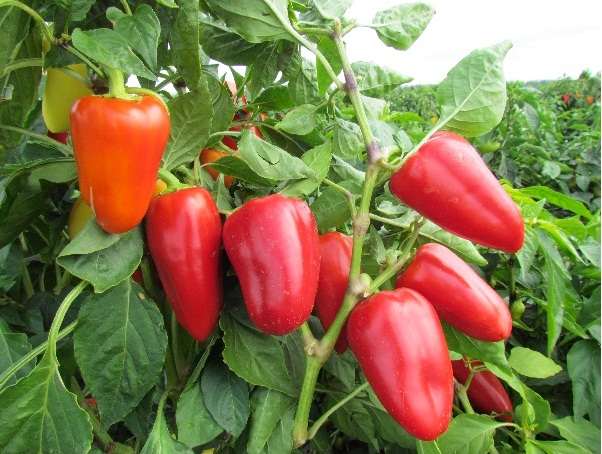 Those who appreciate a rich and early harvest, of course, are aware of the Bonet variety. Already in June, sweet and juicy peppers will decorate the table and saturate the body with vitamins. The cultivation of this variety has many advantages and almost no shortcomings, which is probably why it is appreciated by gardeners.
Those who appreciate a rich and early harvest, of course, are aware of the Bonet variety. Already in June, sweet and juicy peppers will decorate the table and saturate the body with vitamins. The cultivation of this variety has many advantages and almost no shortcomings, which is probably why it is appreciated by gardeners.
Content
Grade description
“Boneta” refers to early ripening varieties, ripe fruits can be tasted as early as 80-88 days after emergence. The plant has a powerful stem that covers many leaves of dark green color. The bush can reach a height of 60 cm.
The fruits are rectangular, oblong, 3-4 seed chambers are located inside the pepper. The thickness of its walls can be from 5 to 8 mm, the flesh is fleshy, crispy, juicy. At the stage of technical maturity, pepper has a pale green color, when the fruit fully ripens, the color changes to red or orange. The skin is dull, smooth, the weight of one fruit can vary from 100 to 150 g, but individual fruits can grow up to 200 grams. With proper care from 1 m2 You can collect up to 5 kg of crop. It has excellent taste, even unripe fruits do not have bitterness, and also has a pronounced aroma.
It is entered in the state register of Russia as a variety suitable for cultivation in open ground and greenhouse conditions. They plant it throughout the territory of the former USSR, given the climatic conditions. In the southern regions it is grown in open soil, in the northern regions in greenhouses.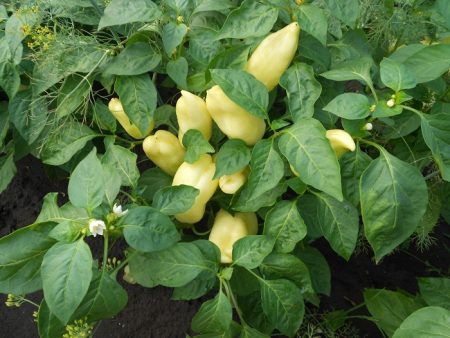
The food is used fresh and also added to various dishes. It is suitable for freezing and preservation. The fruits are rich in many vitamins and fiber, even suitable for dietary nutrition, because in 100 g there are only 25 calories.
Advantages
- Beautiful view of the fruit.
- Early ripening.
- Not picky about leaving.
- Great taste.
- Universality of application.
- It tolerates changing weather conditions.
- To be transported.
disadvantages
Cultivation and care
Planting seedlings
You can buy seeds in a specialized store or collect from the crop. To do this, a little pepper must be left on the bush. When he begins to wrinkle, pluck and extract the seeds, which then must be dried and folded into a bag of paper.
Sowing seeds is recommended in February, the plus is that they are distinguished by excellent germination. You can buy or prepare the soil yourself in the fall. To do this, take mix in equal proportions: peat, chernozem and turf soil and mix thoroughly, before planting on a bucket of the mixture you need to add three tablespoons of wood ash.
Seeds before planting are better to soak in warm water and leave for about 5 hours, after which you can plant. Sowing seeds can be in one common capacity, or in separate. For this, 200 ml plastic cups are suitable. The latter option will save time, because in the future you will no longer have to dive plants. After planting, watering is absolutely necessary, it is necessary to do this with well-maintained warm water, then you should cover the containers with foil and wait for emergence. After the seedlings hatch, the film is removed, otherwise it will stretch and will be unusable.
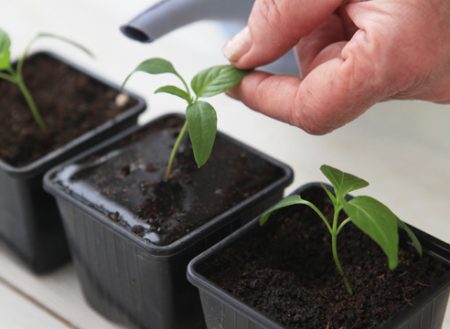
Young plants are best placed in a sunny place. When four leaves appear on each plant, it is necessary to fertilize them with fertilizing containing nitrogen, so that they would increase the green mass. It is sometimes recommended to loosen the soil, it is most convenient to do this with a plastic fork.The temperature in the room should be at least 20 degrees. 7 days before transplanting the seedlings into the soil, you need to start hardening so that it grows stronger. The hardening procedure is carried out as follows: Every day the plant is taken out for several minutes in fresh air, or the room is ventilated, naturally, the outdoor temperature should be at least 160.
Landing
To get a good harvest, not only proper care is important, but the choice of a place to plant. As you know, each plant needs certain useful substances, and during the growth period it pulls them out of the soil. Therefore, planting the same crop in the same area every year should not be. It is worth considering another point that the plants sometimes get sick, while infecting the soil, and the infection can recur in the next season. The best predecessor for pepper are: cucumbers, carrots, beets and cabbage. It is not recommended to plant after potatoes, tomatoes and eggplant.
The selected area should be fertilized and plowed. It is desirable that he be in a sunny place, since Boneta loves light and warmth. Young plants are transplanted into open soil in early June, and can be transferred to a greenhouse in early May. Wells are made in a checkerboard pattern, 1 m2 should not be located more than six plants.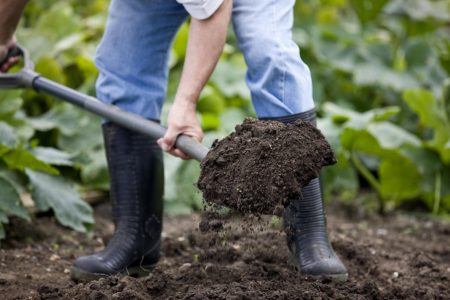
Before planting, fertilizers are added to the wells and watered with settled water at a temperature of 200. The roots should not be buried during planting. During the first seven days, you need to water the plant daily, but not plentifully. When forming the first ovaries, it is better to feed the pepper with potash fertilizers, they will help the vegetable grow and ripen faster, and increase the yield in the future. If there are a lot of ovaries on the bush, it would be better to tie up pepper to avoid breaking the stem.
Disease and weather resistant
“Boneta” tolerates fluctuations in temperature and dry weather, but it still affects the yield. It is believed that this variety has a natural immunity to common diseases. But for prevention, it is better to treat the plant several times with fungicides, taking a break between procedures for about 10 days.
Reviews
Miroslava 36 years old Saransk
Finally bought a plot, I have long dreamed of my garden. Planted several varieties of pepper, Boneta was especially pleased, the harvest was already at the end of June, its natural, without harmful substances! The taste is excellent, wonderful pepper aroma. Add to salads, stuffed and frozen for the winter. Next year, I’ll plant more and preserve for the winter.
Maria 69 years old Izhevsk
I suffer from hypertension, and a friend advised me to eat sweet pepper, he says, it reduces pressure. At first I did not believe it, but in the summer I tried it, especially since my daughter-in-law planted the Boneta variety for the first time. I don’t know whether to believe my eyes, but by 10 units it went down without any pills. Or pepper miraculous, or just coincidentally, I do not know. And there was a lot of harvest, I really liked the taste, sweet, not bitter at all, asked me to plant more next season!
Conclusion
Following all the recommendations for care, both an experienced agronomist and a beginner will be able to get an excellent harvest. Moreover, Boneta is not as capricious as many varieties of pepper.

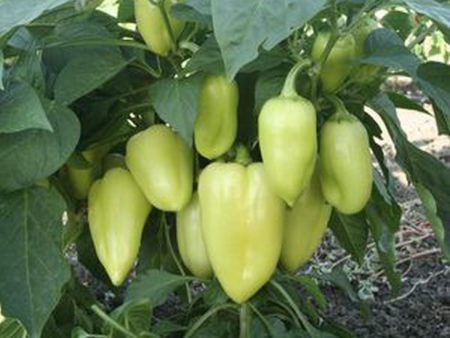



 Calorie pepper stuffed with meat and rice - BZHU per 100 grams
Calorie pepper stuffed with meat and rice - BZHU per 100 grams Gorky pepper - the best varieties for open ground
Gorky pepper - the best varieties for open ground Hot pepper seeds - the best varieties for open ground and reviews
Hot pepper seeds - the best varieties for open ground and reviews Capsicum tincture for hair - how to use and reviews
Capsicum tincture for hair - how to use and reviews